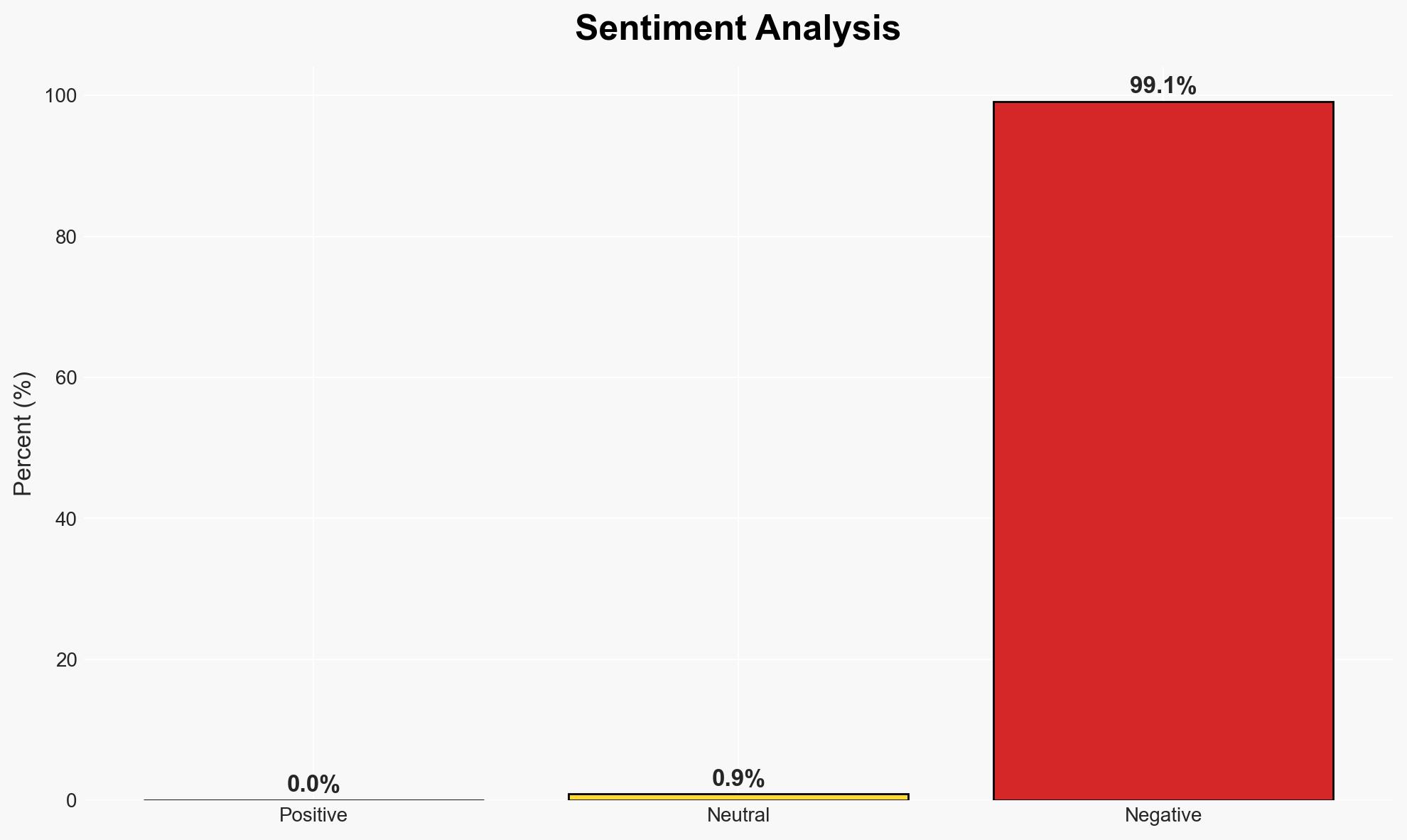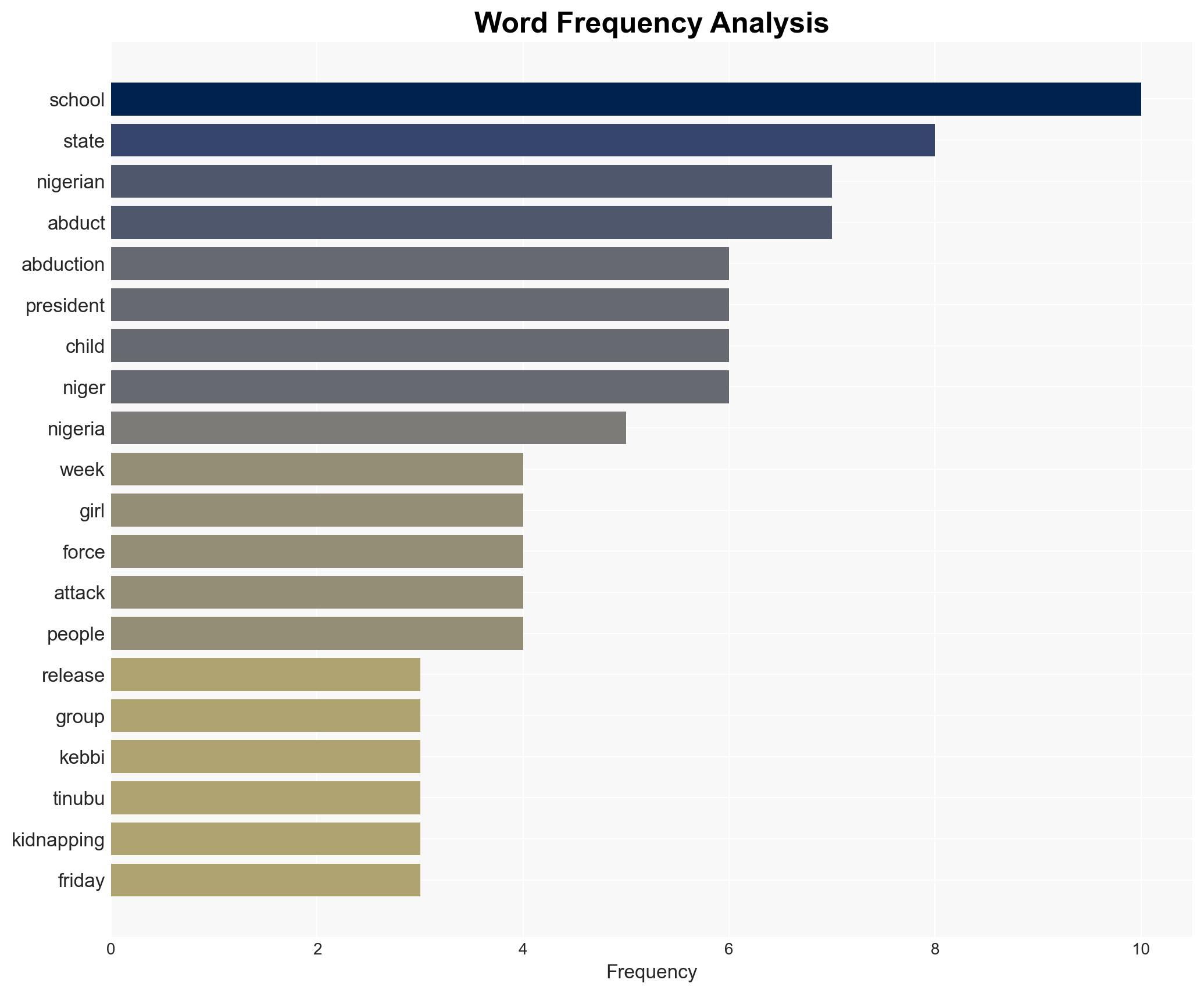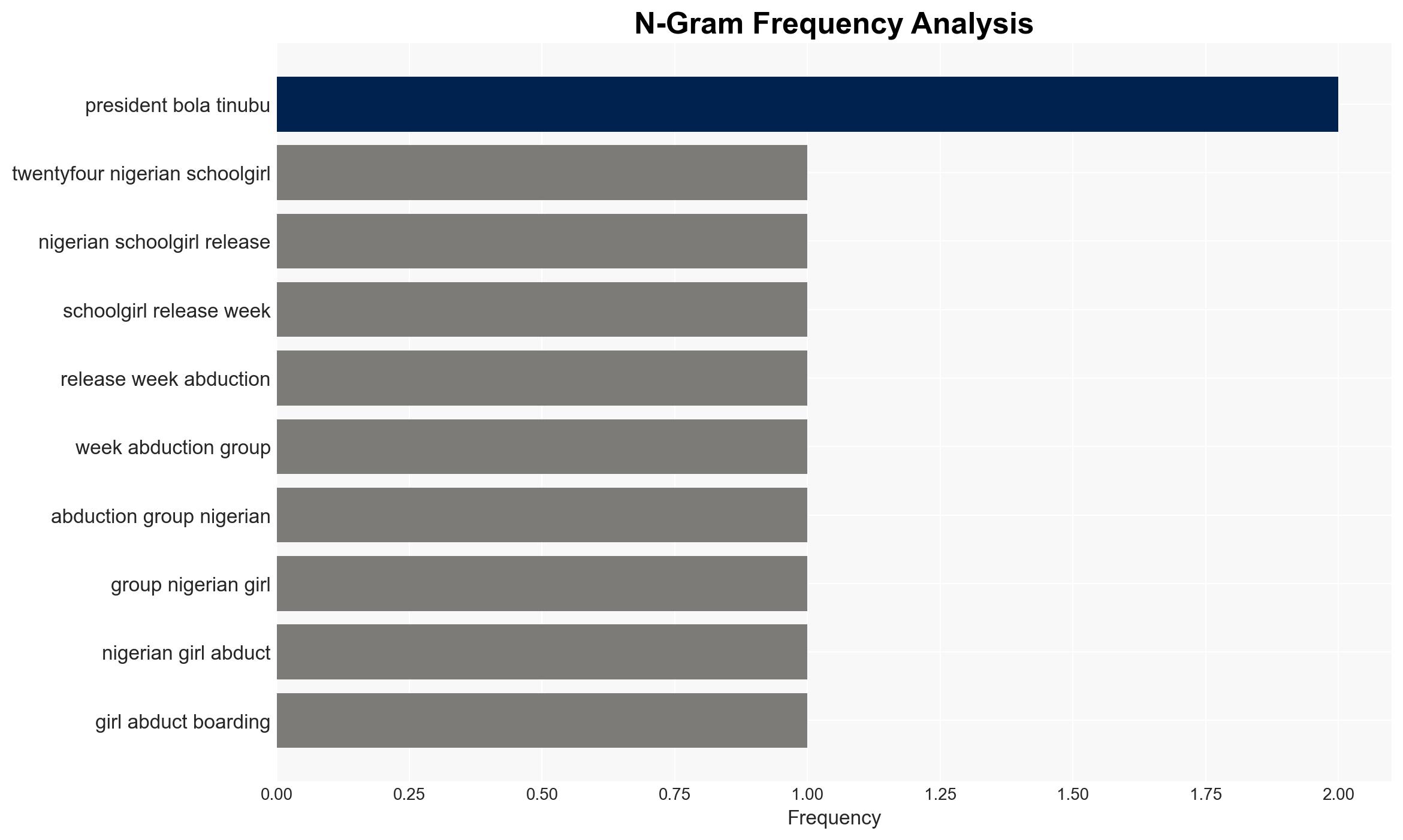Nigerian authorities secure release of 24 schoolgirls abducted over a week ago amid rising kidnapping concerns
Published on: 2025-11-26
AI-powered OSINT brief from verified open sources. Automated NLP signal extraction with human verification. See our Methodology and Why WorldWideWatchers.
Intelligence Report: Twenty-four Nigerian schoolgirls released over a week after abduction
1. BLUF (Bottom Line Up Front)
The recent release of 24 Nigerian schoolgirls, abducted by armed assailants in Kebbi State, highlights ongoing security challenges in Nigeria, particularly in the context of mass abductions for ransom. The situation underscores the vulnerability of educational institutions and the need for enhanced security measures. There is moderate confidence in the assessment that the release was facilitated by Nigerian security forces, although the exact circumstances remain unclear.
2. Competing Hypotheses
- Hypothesis A: The release of the schoolgirls was a result of successful Nigerian security operations. Supporting evidence includes President Tinubu’s praise for security forces and reports of coordinated surveillance and ground operations. However, the lack of detailed operational information introduces uncertainty.
- Hypothesis B: The release was negotiated or influenced by other non-military means, such as ransom payments or negotiations with the abductors. This is supported by the common practice of ransom payments in similar past incidents, but there is no direct evidence provided in the snippet.
- Assessment: Hypothesis A is currently better supported due to the official statements praising security forces, although the absence of detailed operational accounts leaves room for alternative explanations. Indicators such as future disclosures of negotiation details or ransom payments could shift this judgment.
3. Key Assumptions and Red Flags
- Assumptions: The Nigerian government is committed to addressing mass abductions; security forces have the capability to conduct effective operations; the abductors are primarily motivated by financial gain.
- Information Gaps: Specific details of the security operation or negotiations leading to the release; motivations and identities of the abductors; the role of local communities or intermediaries.
- Bias & Deception Risks: Potential bias in official statements aiming to portray government actions positively; possible deception by abductors regarding their intentions or affiliations.
4. Implications and Strategic Risks
The release of the schoolgirls, while positive, may not deter future abductions and could embolden other groups if perceived as a successful tactic. The situation could exacerbate regional instability and challenge governmental authority.
- Political / Geopolitical: Potential strain on government credibility if abductions continue; increased pressure from international actors for improved security measures.
- Security / Counter-Terrorism: Possible increase in abduction attempts; need for enhanced protection of vulnerable sites, particularly schools.
- Cyber / Information Space: Potential use of social media by abductors or sympathizers to spread propaganda or misinformation.
- Economic / Social: Impact on education access and community trust in government; potential economic strain from increased security spending.
5. Recommendations and Outlook
- Immediate Actions (0–30 days): Enhance security presence at vulnerable educational institutions; increase intelligence gathering on potential abductor networks.
- Medium-Term Posture (1–12 months): Develop community-based security initiatives; strengthen regional cooperation to address cross-border abduction networks.
- Scenario Outlook:
- Best Case: Strengthened security measures lead to a significant reduction in abductions.
- Worst Case: Continued abductions undermine government authority and destabilize affected regions.
- Most Likely: Sporadic abductions persist, prompting ongoing security challenges and international scrutiny.
6. Key Individuals and Entities
- President Bola Tinubu
- Bayo Onanuga (Special Adviser to the President)
- Umar Bago (Niger State Governor)
- Bulus Dauwa Yohanna (Bishop responsible for St. Mary’s School)
- Gordon Brown (UN Education Envoy)
7. Thematic Tags
Structured Analytic Techniques Applied
- Cognitive Bias Stress Test: Expose and correct potential biases in assessments through red-teaming and structured challenge.
- Bayesian Scenario Modeling: Use probabilistic forecasting for conflict trajectories or escalation likelihood.
- Network Influence Mapping: Map relationships between state and non-state actors for impact estimation.
Explore more:
National Security Threats Briefs ·
Daily Summary ·
Support us





